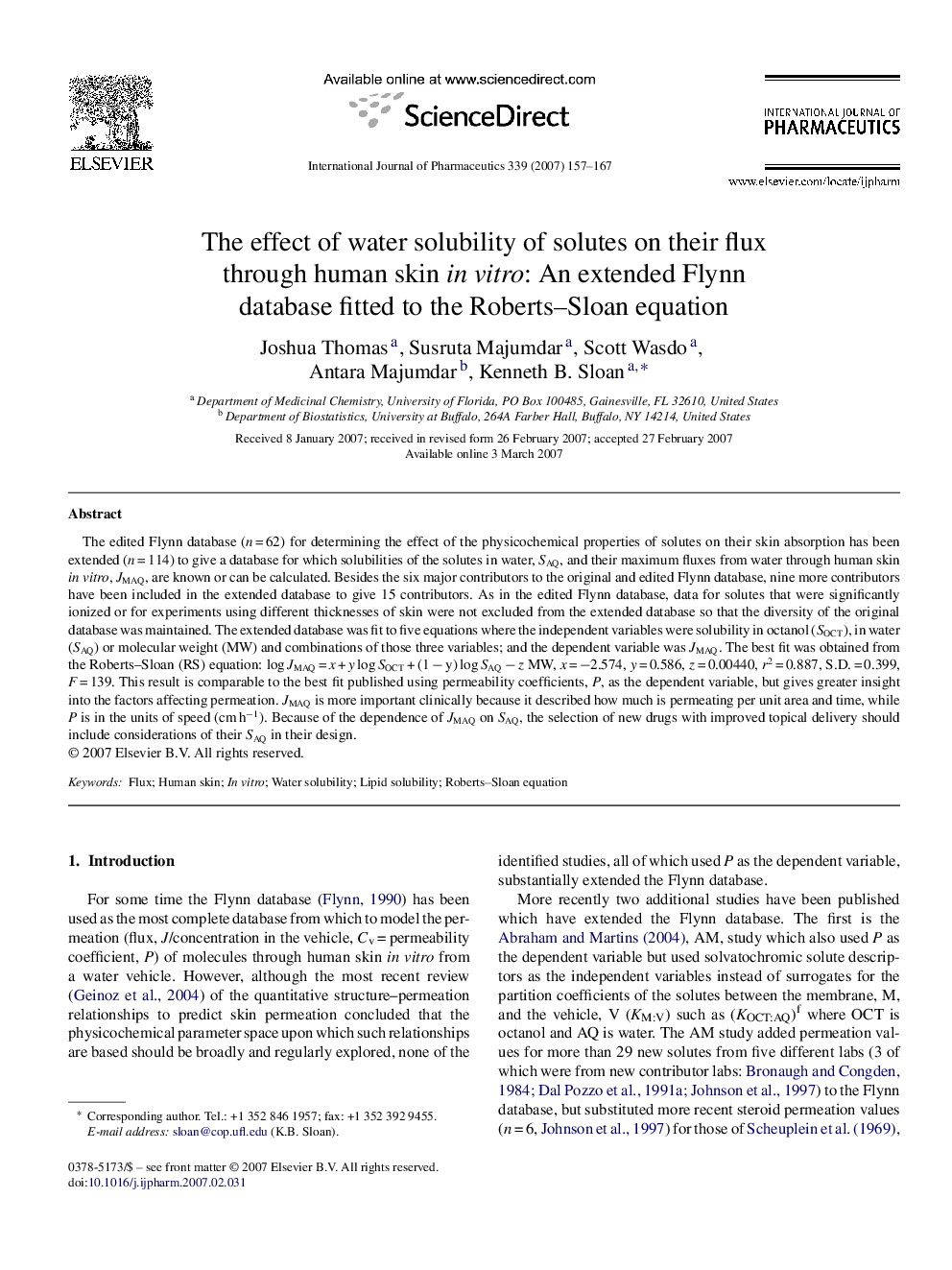| Article ID | Journal | Published Year | Pages | File Type |
|---|---|---|---|---|
| 2506095 | International Journal of Pharmaceutics | 2007 | 11 Pages |
The edited Flynn database (n = 62) for determining the effect of the physicochemical properties of solutes on their skin absorption has been extended (n = 114) to give a database for which solubilities of the solutes in water, SAQ, and their maximum fluxes from water through human skin in vitro, JMAQ, are known or can be calculated. Besides the six major contributors to the original and edited Flynn database, nine more contributors have been included in the extended database to give 15 contributors. As in the edited Flynn database, data for solutes that were significantly ionized or for experiments using different thicknesses of skin were not excluded from the extended database so that the diversity of the original database was maintained. The extended database was fit to five equations where the independent variables were solubility in octanol (SOCT), in water (SAQ) or molecular weight (MW) and combinations of those three variables; and the dependent variable was JMAQ. The best fit was obtained from the Roberts–Sloan (RS) equation: log JMAQ = x + y log SOCT + (1 − y) log SAQ − z MW, x = −2.574, y = 0.586, z = 0.00440, r2 = 0.887, S.D. = 0.399, F = 139. This result is comparable to the best fit published using permeability coefficients, P, as the dependent variable, but gives greater insight into the factors affecting permeation. JMAQ is more important clinically because it described how much is permeating per unit area and time, while P is in the units of speed (cm h−1). Because of the dependence of JMAQ on SAQ, the selection of new drugs with improved topical delivery should include considerations of their SAQ in their design.
